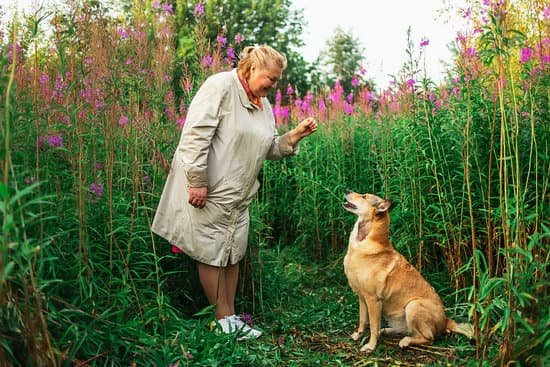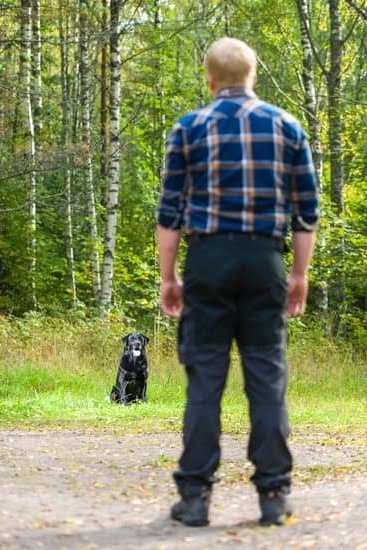Leash training is a fundamental aspect of owning and caring for a dog. It not only ensures their safety but also provides owners with greater control and peace of mind during walks. In this article, we will explore the essential steps to train your dog to walk on the leash effectively.
Leash training is crucial for dogs of all ages and breeds. Not only does it keep them from running into traffic or getting lost, but it also helps prevent unwanted behaviors such as pulling or jumping on people. By teaching your dog to walk calmly on a leash, you increase their overall safety and enhance their quality of life.
One of the main benefits of leash training is improved control over your dog’s movements. A properly trained dog will be less likely to lunge, chase after distractions, or exhibit aggressive behavior towards other animals or people while on the leash. This increased control allows for a more enjoyable and stress-free walking experience for both you and your furry companion.
Understanding the importance of leash training is just the first step. In the following sections, we will delve deeper into understanding your dog’s behavior and needs, selecting the right leash and collar, introducing the leash to your dog in a positive manner, teaching basic commands for leash walking, practicing in controlled environments before venturing out in public, handling challenges like leash pulling, and progressing to leash walking in public spaces.
By adhering to these guidelines and implementing effective training techniques, you can ensure that your dog becomes a well-behaved walker who can accompany you confidently wherever you go. So let us get started on this journey to help you train your furry friend to walk on the leash with ease and enjoyment.
Understanding Your Dog’s Behavior and Needs
Understanding your dog’s behavior and needs is crucial when it comes to leash training. Every dog is unique, with their own temperament and personality traits. By understanding these traits, you can tailor your training approach to best suit your dog’s individual needs.
One important aspect of understanding your dog’s behavior is recognizing the different needs of dogs of various breeds and sizes. For example, small breeds may have more energy and may need shorter, more frequent walks compared to larger breeds. Understanding this will help you provide the appropriate amount of exercise for your dog.
Additionally, it is essential to be able to identify and address specific behavior issues in your dog. Some dogs may have a tendency to pull on the leash, while others may exhibit fear or aggression towards other dogs or people while on a walk. By understanding these behaviors, you can design a training plan that specifically targets these issues.
To better understand your dog’s behavior and needs, consider the following tips:
- Observe: Spend time observing your dog’s behavior in different situations. Notice any triggers that cause certain reactions or behaviors in your dog.
- Educate Yourself: Consult books, online resources, or even professional trainers to gain a deeper understanding of canine behavior and how it relates to leash training.
- Seek Professional Help: If you are struggling with understanding or addressing specific behavioral issues in your dog, consider seeking guidance from a professional trainer who specializes in canine behavior.
Remember, each dog is unique, so taking the time to understand their behavior will greatly contribute to successful leash training.
Choosing the Right Leash and Collar
Choosing the right leash and collar is an essential step in leash training your dog. The type of leash and collar you select can greatly impact your dog’s comfort, control, and overall walking experience. In this section, we will discuss the various options available in the market and provide guidelines on how to choose the most appropriate leash and collar for your dog’s size and temperament.
Types of Leashes
There are several types of leashes to choose from, each with its own advantages and considerations. Some common types include:
- Standard leash: This is a basic leash that is typically made of nylon or leather. It usually ranges from 4 to 6 feet in length and provides a good balance of control and freedom for your dog.
- Retractable leash: These leashes feature a retractable cord or belt mechanism that allows you to adjust the length as needed. They offer more freedom for your dog but can be challenging to control, particularly if your dog tends to pull.
- Hands-free leash: These leashes are designed to be worn around the waist or across the shoulder, freeing up your hands while ensuring that your dog stays close by.
- Training leash: Also known as a “long line” or “check cord,” these leashes are longer (usually 15 to 30 feet) and are used for training purposes such as recall or off-leash training in controlled environments.
Types of Collars
Selecting the right collar depends on your dog’s comfort, walking style, and specific needs. Here are some common types of collars:
- Flat collar: This is a simple buckle collar made of nylon or leather that attaches around your dog’s neck. It is suitable for most dogs without specific behavioral issues.
- Martingale collar: Also known as a limited-slip collar, it features an extra loop that tightens slightly when your dog pulls, preventing it from slipping off. It provides more control compared to a regular collar without choking or causing discomfort.
- Harness: A harness is an alternative to traditional collars and is particularly beneficial for dogs that tend to pull or have respiratory issues. The pressure distributes evenly across the chest, reducing strain on the neck area.
When choosing a leash and collar, consider factors such as your dog’s size, strength, comfort level, and any existing behavioral issues. It’s important to select materials that are durable, comfortable for your dog, and provide you with sufficient control during walks.
Remember that no matter which leash and collar you choose, they should never cause pain or distress to your dog. It’s always a good idea to consult with a professional trainer or veterinarian for personalized recommendations based on your dog’s needs.
Introducing the Leash to Your Dog
When it comes to leash training your dog, a gradual and positive introduction to the leash is essential. This step helps your dog associate the leash with positive experiences and reduce any fear or resistance towards it. Here are some step-by-step instructions to help you acclimate your dog to the leash:
- Familiarize your dog with the leash: Start by letting your dog sniff and investigate the leash while keeping it stationary. This allows them to become familiar with its scent and presence.
- Attach the leash to the collar/harness: Once your dog seems comfortable with the stationary leash, attach it to their collar or harness. Allow them to wear it around the house for short periods initially.
- Begin indoor practice sessions: Take up a relaxed stance and hold onto the other end of the leash without applying any tension. Encourage your dog to move towards you using treats or toys as motivation.
- Gradually introduce controlled movements: After a few successful indoor practice sessions, begin taking small steps in different directions while gently guiding your dog along with you. Reward them for walking beside you without pulling.
- Extend training to outdoor environments: Once your dog is comfortable walking indoors on a leash, it’s time for outdoor training sessions in a familiar and controlled environment, such as your backyard or a quiet park.
Remember that every dog is unique, and their response to leashes may vary. Some dogs may show resistance or fear towards the leash initially. In such cases, take things slow, be patient, and use positive reinforcement techniques consistently.
To troubleshoot during this process, here are some tips:
- If your dog pulls away from you or resists moving when wearing the leash, try engaging them in play or offering treats as rewards.
- If they show fear when you pick up or attach the leash, gradually desensitize them by associating these actions with positive experiences, like treats or praise.
By introducing the leash gradually and positively, you are setting a strong foundation for successful leash training. With consistency and patience, your dog will learn to associate the leash with enjoyable walks, improving their safety and enabling better control during outings.
| Step | Description |
|---|---|
| 1 | Familiarize your dog with the leash by letting them sniff and investigate it while it’s stationary. |
| 2 | Attach the leash to the collar/harness and let your dog wear it around the house in short periods. |
| 3 | Start indoor practice sessions by holding onto the leash without applying tension and encouraging your dog to move towards you using rewards. |
Teaching Basic Commands for Leash Walking
Once your dog has become comfortable with wearing a leash, it’s time to move on to teaching them basic commands for leash walking. These commands are essential for ensuring control and safety during walks, and they will make the walking experience more enjoyable for both you and your dog.
- “Heel” command: The “heel” command is used to encourage your dog to walk calmly and beside you without pulling on the leash. To teach this command, start by holding a treat close to your dog’s nose and walk forward slowly. As you walk, say the word “heel” in a calm and clear voice.
When your dog walks beside you without pulling, reward them with the treat and praise. Practice this command in different environments, gradually increasing distractions to reinforce their understanding. - “Stop” command: The “stop” command is crucial for maintaining control while walking on a leash. To teach this command, start by walking with your dog on a loose leash. Suddenly stop and say “stop” in a firm but calm voice while gently tugging on the leash if needed. Reward your dog with praise or a treat when they stop beside you without pulling. Repeat this exercise multiple times until they respond consistently to the command.
- Consistency and positive reinforcement: Consistency is key when teaching commands for leash walking. Always use the same words or gestures for each command and be patient with your dog as they learn. Positive reinforcement such as treats, praise, or even playtime after successful command execution will motivate them to continue following instructions.
Remember that each dog learns at their own pace, so be patient and understanding throughout the training process. It’s also important to avoid punishment-based training methods as they can be counterproductive and damage the bond between you and your furry friend.
By teaching these basic commands for leash walking, you’ll have better control over your dog during walks and create a positive walking experience for both of you. Stay consistent and patient, and your dog will soon become a leash-walking pro.
Practicing Leash Walking at Home and in Controlled Environments
Once your dog has become acclimated to the leash and understands basic commands, it is time to start practicing leash walking in familiar and controlled environments. This section will provide guidance on incorporating leash walking into your daily routines at home and gradually increasing the difficulty level during training sessions.
Start by selecting a quiet and familiar area around your home or backyard for practice sessions. It’s important to choose an environment with minimal distractions initially, as it will allow your dog to focus on learning and following commands. As you progress in training, you can gradually introduce more distractions such as people, other animals, or busier areas.
During these training sessions, reinforce the commands you have already taught your dog, such as “heel” or “stop,” and reward them with praise or treats for following instructions correctly. Consistency is key during this phase. Make sure to use the same commands and techniques that were previously introduced to your dog.
Incorporating leash walking into daily routines at home is also crucial for reinforcing good behavior. Take your dog on regular walks within familiar surroundings, such as around the block or in a nearby park. This will help them become comfortable with different sights, sounds, and smells outside of their immediate environment.
As you progress with leash walking at home, slowly increase the difficulty level by introducing more distractions. You can do this by taking your dog to slightly busier areas or gradually decreasing the distance between them and potential distractions like other dogs or people. Always keep a close eye on their behavior and adjust accordingly to make sure they are comfortable with each new challenge.
| Training Tip | Description |
|---|---|
| Start Slowly | Gradually introduce leash walking in controlled environments to build your dog’s confidence |
| Reinforce Commands | Consistently use the same commands and techniques during training sessions to reinforce good behavior |
| Incorporate Daily Walks | Take your dog on regular walks in familiar surroundings to reinforce leash walking skills and introduce them to new sights and sounds |
| Increase Difficulty Level Gradually | Slowly introduce more distractions and challenges as your dog becomes more comfortable with basic leash walking commands |
Practicing leash walking at home and in controlled environments is an essential step towards building a strong foundation for successful leash walking. Remember to remain patient, consistent, and provide positive reinforcement throughout the training process. With time, practice, and consistency, you will be able to venture into more public settings with your well-trained furry companion.
Handling Challenges and Correcting Leash Pulling
Leash pulling can be one of the most common challenges encountered during leash training. Many dogs, especially those who are excited or have a strong prey drive, have a natural instinct to pull on the leash. However, allowing your dog to constantly pull can lead to discomfort for both of you and make walking a frustrating experience. In this section, we will discuss effective techniques for correcting leash pulling and maintaining control.
One key technique for addressing leash pulling is using positive reinforcement. Dogs respond well to rewards, so when your dog walks calmly by your side without pulling, be sure to praise and reward them with treats or verbal cues like “good job.” Positive reinforcement helps dogs associate good behavior with rewards and encourages them to repeat it in the future. It’s important to be consistent and immediately reward your dog when they walk nicely on the leash.
Another technique to correct leash pulling is teaching your dog the “heel” command. This command teaches your dog to walk respectfully beside you instead of pulling ahead. Start by holding a treat close to your side and giving the cue “heel” as you begin walking.
If your dog starts pulling, stop walking and wait for them to return next to you before continuing. Gradually increase the distance and duration of walking beside you without pulling, rewarding your dog each time they successfully maintain the proper position.
Using tools like no-pull harnesses or head collars can also help address leash pulling. These tools provide additional control over your dog’s movements and discourage them from pulling by redirecting their attention back towards you. However, it’s essential to choose these tools wisely and use them correctly to ensure they are safe and effective for both you and your dog.
Progressing to Leash Walking in Public
Transitioning gradually
When you feel that your dog is comfortable and confident walking on the leash in controlled environments, it’s time to start transitioning to public spaces. However, this should be done gradually to ensure a smooth and successful experience for both you and your dog.
Start by choosing quieter and less crowded areas for your first few outings, such as quiet neighborhoods or local parks during off-peak hours. This will help minimize distractions and allow your dog to continue practicing their leash walking skills in a relatively controlled environment.
Managing distractions
Walking in public often means encountering various distractions that can challenge your dog’s focus and obedience. To help manage these distractions, it’s important to continue reinforcing commands such as “heel” and “stop”.
Use positive reinforcement techniques such as treats or verbal praise to reward your dog for maintaining good behavior amidst distractions. Additionally, maintaining a short leash can provide better control over your dog’s movements, especially in situations where they might be tempted to chase after squirrels or other animals.
Ensuring a positive walking experience
During public walks, always prioritize safety by ensuring that your dog’s collar or harness is properly secured and comfortable. Avoid using retractable leashes in busy areas as they can compromise control and may cause accidents. Additionally, keep an eye out for signs of stress or anxiety in your dog, such as excessive panting, trembling, or pulling towards escape routes. If these signs occur, calmly redirect their attention back to you using treats or toys.
Remember that it takes time for dogs to adjust to new environments and distractions. Be patient with your furry companion as they learn how to navigate the world on a leash. Each walk is an opportunity for both of you to reinforce training while enjoying quality bonding time together.
Conclusion
Leash training is a crucial aspect of responsible dog ownership, and through this comprehensive guide, we have outlined various strategies and techniques to successfully train your dog to walk on the leash.
By understanding your dog’s behavior and needs, choosing the right leash and collar, introducing the leash gradually, teaching basic commands, practicing in controlled environments, handling challenges, progressing to walking in public spaces, you are well on your way to achieving a harmonious walking experience with your furry friend.
As you embark on this journey, it is important to celebrate each success along the way. From the moment your dog takes their first steps confidently with you on the leash to mastering commands like “heel” and triumphing over obstacles such as pulling, every small step deserves recognition. Reward their progress with praise, treats, or whatever motivates them most. Celebrating these accomplishments not only reinforces positive behavior but also strengthens the bond between you and your dog.
However, it is essential to remember that training does not stop here. Ongoing training and reinforcement are key to maintaining consistent behavior in your dog. Consistency and positive reinforcement should remain at the forefront of any training routine.
Regular practice walks will help both you and your dog solidify the lessons learned during training sessions. By incorporating these skills into daily routines at home and gradually increasing difficulty levels by introducing distractions in controlled environments, you can ensure that your dog continues to behave appropriately while on a leash.
For those seeking further support or resources beyond what this guide provides, there are numerous avenues available. Dog trainers or behavioral specialists can offer personalized assistance specific to your dog’s needs. Online communities dedicated to dog training also provide a platform for sharing experiences and seeking advice from fellow pet owners facing similar challenges.
Remember that leash training is an ongoing process that requires patience and dedication from both you and your dog. With consistent effort and positive reinforcement, walking on a leash will become second nature for your furry companion. Embrace the journey, celebrate your successes, and enjoy the countless benefits that come from a well-trained leash-walking dog.
Frequently Asked Questions
How do you train a dog to walk on a leash beside you?
Training a dog to walk on a leash beside you involves patience, consistency, and positive reinforcement. Start by introducing the leash gradually, allowing your dog to sniff and investigate it. Once your dog is comfortable with the leash, attach it and begin walking beside them in a quiet area without distractions.
Use treats or favorite toys as rewards for walking calmly by your side. If your dog starts to pull or stray away, gently guide them back toward you using verbal cues or slight tugs on the leash. With practice and consistent training sessions, your dog will learn to associate walking beside you with positive experiences and gradually improve their leash behavior.
How do I train my dog to walk on a leash without pulling?
Teaching a dog to walk on a leash without pulling requires consistent training and positive reinforcement techniques. Begin by getting your dog’s attention with treats or rewards before attaching the leash. Start in an environment that is familiar and free from distractions.
When your dog begins to pull, stop walking immediately and wait until they relax or return their attention to you. As soon as they do so, reward them with praise and continue walking again. Consistently reinforce this pattern of stopping when there is tension on the leash and rewarding calm behavior will help teach your dog that pulling does not lead to progress but rather slows down the walk.
How do I stop my dog from pulling on lead?
To stop a dog from pulling on the lead, it is important to address this behavior through effective training methods reinforced consistently over time. Firstly, ensure your dog is properly fitted with an appropriate harness or collar that doesn’t encourage pulling or discomfort for them. The next step involves teaching loose-leash walking through positive reinforcement techniques such as treats or toys whenever your dog walks calmly without pulling ahead.
If your dog starts to pull during walks, stop moving forward immediately until they release pressure on the lead by either stepping back towards you or simply loosening the tension themselves. This teaches them that pulling doesn’t result in progress and helps redirect their focus toward walking calmly beside you. With repetition and patience, your dog will learn to walk politely on a lead without pulling.

Welcome to the blog! I am a professional dog trainer and have been working with dogs for many years. In this blog, I will be discussing various topics related to dog training, including tips, tricks, and advice. I hope you find this information helpful and informative. Thanks for reading!





